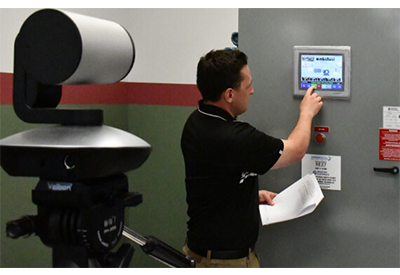Ontario Preparing More Students for Careers in the Skilled Trades

November 24, 2022
The Ontario government is investing $4.8 million to expand the dual credit program, helping prepare more students for the jobs of tomorrow by better connecting learning in the classroom to good-paying jobs. The expansion of the program will create opportunities for an additional 2,200 students to earn college credits and take apprenticeship training while still in high school and help to build interest in skilled trades as a rewarding career.
“This expansion supports our government’s broader mission to fill the skills gap by better connecting and ultimately inspiring Ontario students to enter these good-paying jobs,” said Stephen Lecce, Minister of Education. “By placing a real emphasis on life and job skills like coding, financial literacy and budgeting, along with more hands-on learning opportunities in the classroom, we are ensuring Ontario students graduate with a competitive advantage.”
Ontario’s dual credit programs support eligible secondary students to take college courses or apprenticeship training that count towards their Ontario Secondary School Diploma and a postsecondary certificate, diploma, degree or a Certificate of Apprenticeship. High school students taking dual credit courses benefit from a variety of college supports and services as well as the supervision and support of their dual credit teacher at their school. Additional Training Delivery Agents, including trade unions, will now be included in the delivery of Dual Credit Level 1 Apprenticeship training programs.
With one in three journeypersons today being over 55 years of age, the next generation of workers must emerge to fill critical labour shortages. Currently, 100,000 construction trades workers will be needed by the end of the decade to deliver Ontario’s ambitious $160 billion plan to build critical infrastructure, housing and transit.
“For far too long, parents and students have been told the only path to success in life is by going to university, which is simply not true,” said Monte McNaughton, Minister of Labour, Immigration, Training and Skills Development. “When you have a job in the trades, you have a job for life. Our government will continue to give students the tools they need to land six-figure salaries and purpose-driven careers.”
The government is also expanding the dual credit program to attract 420 students over two years into Early Childhood Education career pathways, which is critical to ensuring qualified workers enter the sector as demand rises following the implementation of Ontario’s plan to improve affordability and accessibility.
For the 2023-24 school year the dual credit program expansion will include:
- •An additional 400 students in apprenticeship in-class training
- •An additional 400 students in technological education college courses
- •An additional 180 students in Early Childhood Education college courses
“From attracting investments and good jobs, to training thousands of skilled trades workers and helping keep costs down for families, our government has made significant progress on our Plan to Build,” said Peter Bethlenfalvy, Minister of Finance. “As we navigate these uncertain economic times, we are advancing our plan with new targeted measures that support families, workers, seniors and small businesses.”
Since 2019, the Ministry of Education has taken action to increase awareness of and exposure to technology, the skilled trades and the apprenticeship pathway by:
- •Modernizing curriculum, including the revised Math, Science, and Career Studies courses including mandatory learning about the skilled trades.
- •Providing early and ongoing exposure to skilled trades through experiential learning, like co-op education.
- •Delivering job skills programs, like Specialist High Skills Major (SHSM), in high schools for students to apply their learning across 19 economic sectors including construction, food processing, manufacturing and transportation.
The expansion of the dual credit program is part of the next steps in Ontario’s Plan to Catch Up and ensures students have exposure and access to learning opportunities to consider skilled trades as a future career.
Quick Facts:
- •Approximately one in five job openings in Ontario are projected to be in skilled trades-related occupations by 2026.
- •73 per cent of secondary school students are taking at least one credit in technological education before they graduate.
- •Of all high school graduates, 41 per cent graduate with exposure to at least one job skills experiential learning program, including Cooperative Education, Specialist High Skills Major, Ontario Youth Apprenticeship Program and Dual Credit.
- •Since 2017-18, the number of students participating in the dual credit program, with a skilled trades and technology focus increased by approximately 84 per cent.
- •In 2022-23, students are approved to participate in over 25,500 dual credit courses, of which over 10,900 are related to the skilled trades.
- •According to the Dual Credit Students and their Transition to College 2021report by Ontario College Application Service, almost 93 per cent of all dual credit applicants received an offer to attend college compared to 86 per cent of all students.
- •The Ministry of Education has partnered with First Robotics and Skills Ontario to provide hands-on learning opportunities and competitions for students and is providing $3 million to school boards over three years to strengthen the knowledge of guidance teachers on pathways for skilled trades and apprenticeship.
- •The Ministry of Labour, Immigration, Training and Skills Development is investing an additional $114.4 million over three years in its Skilled Trades Strategy to break the stigma associated with the skilled trades, simplify the system, and encourage employer participation.
Additional Resources
2022 Ontario Budget: Ontario’s Plan to Build
Province Takes Action to Ensure Students Catch Up
Ontario’s Education Plan for Students to Catch Up






